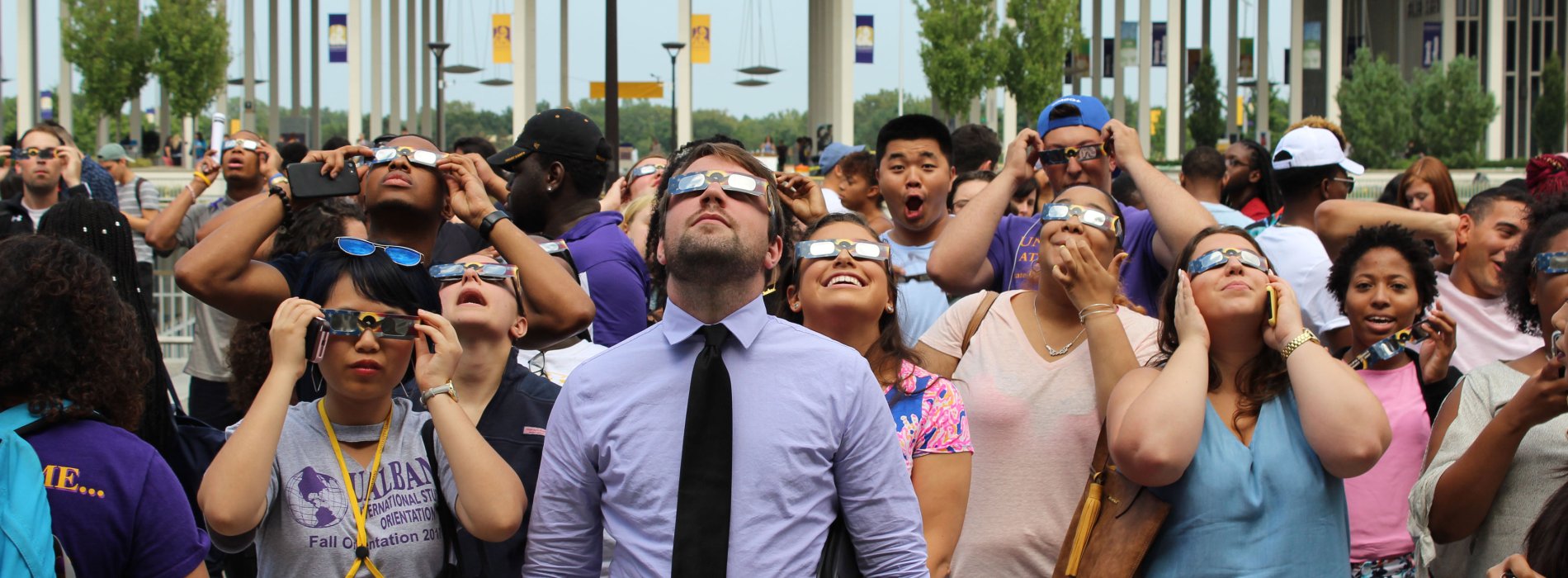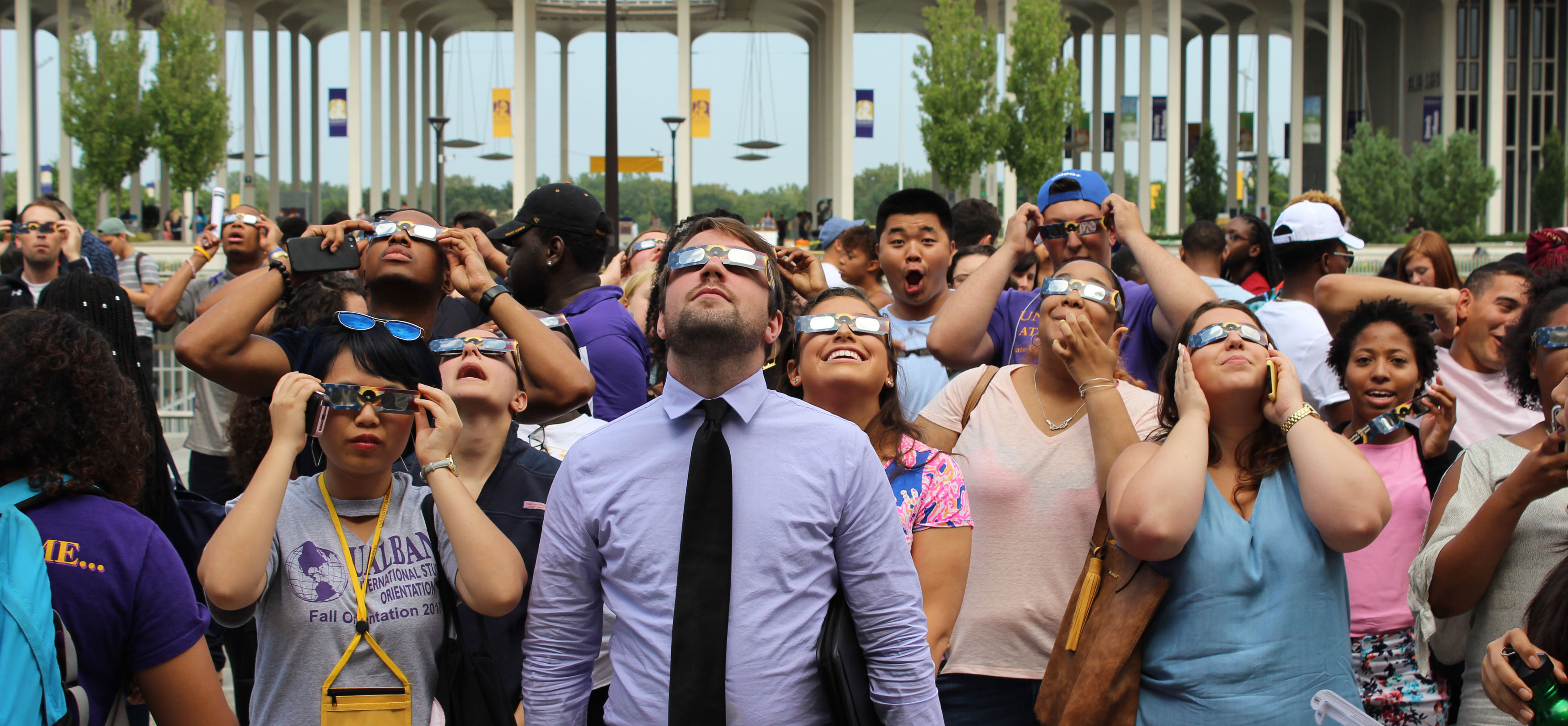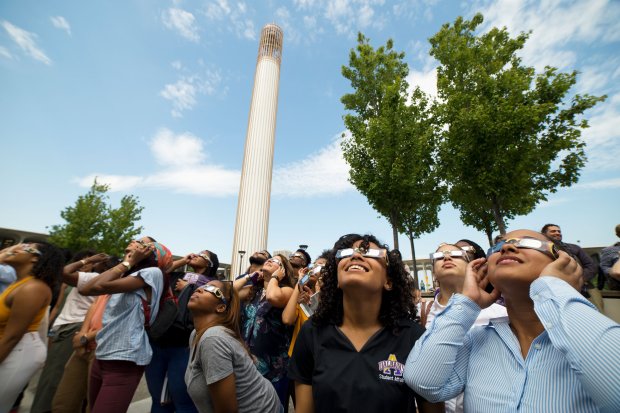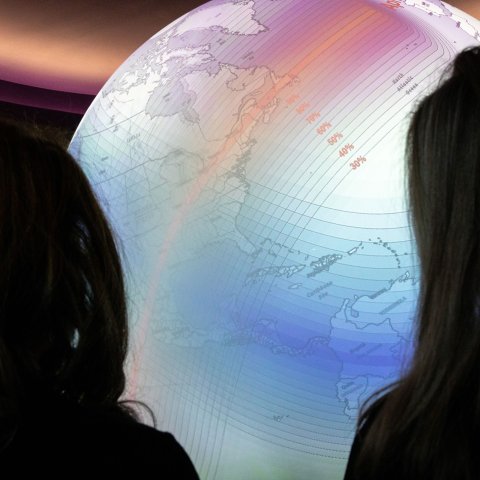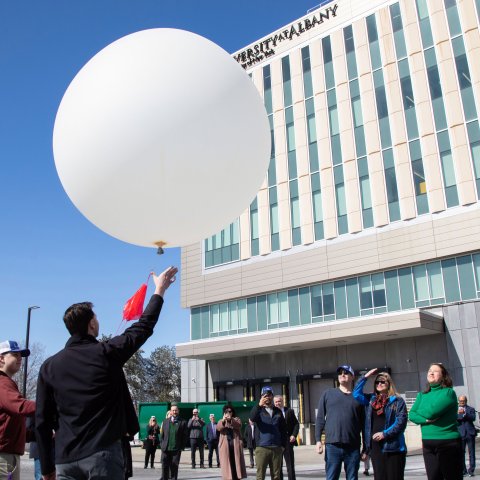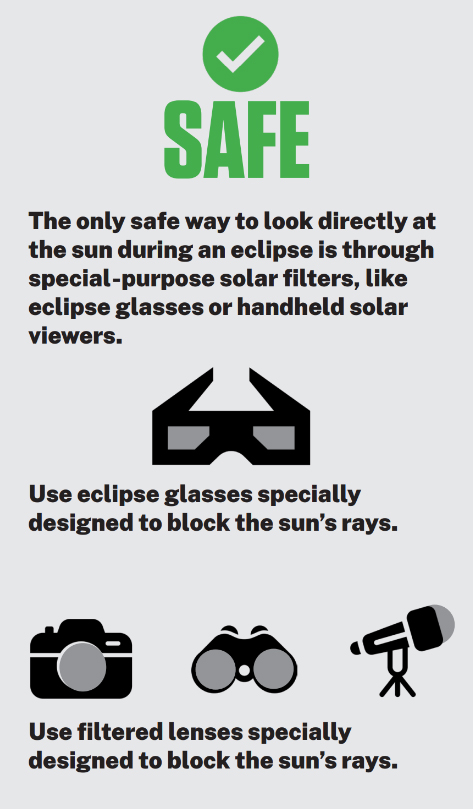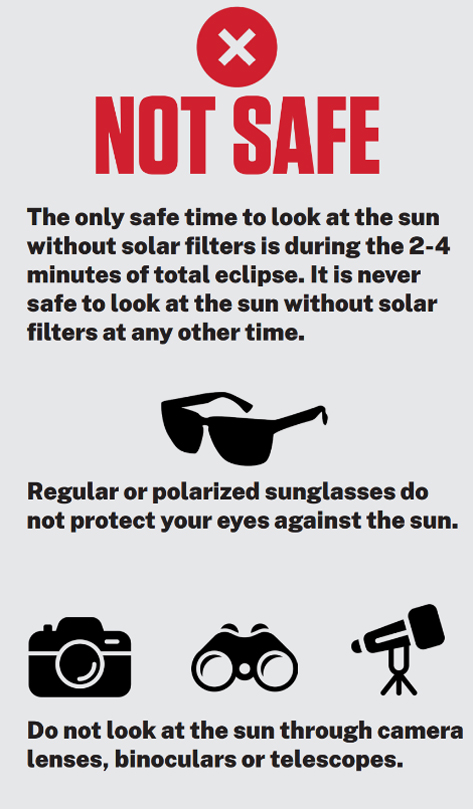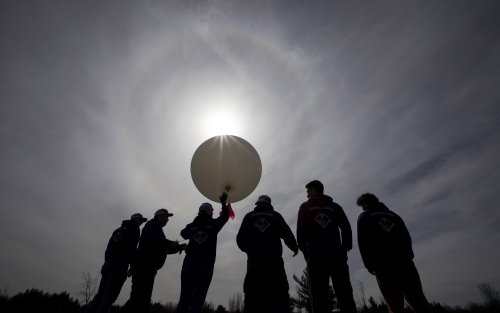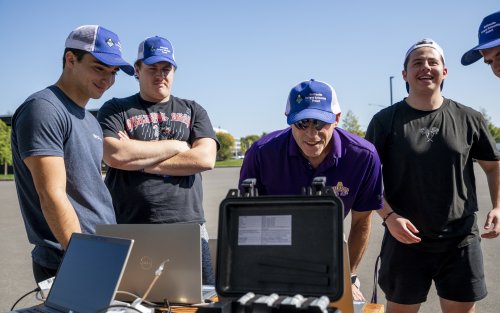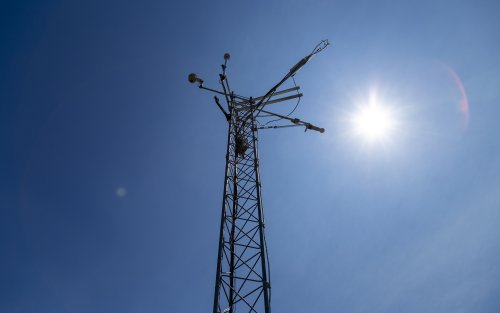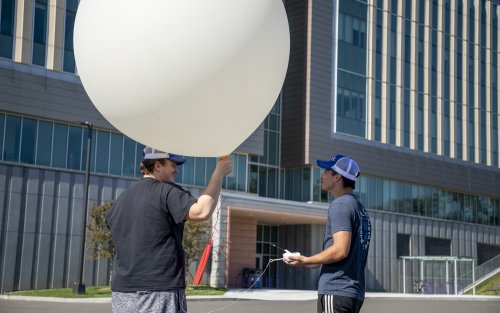On the Uptown Campus
UAlbany Solar Eclipse Viewing: 2:30 to 4 p.m., Monday, April 8, at UAlbany's Entry Plaza
Note: A limited supply of protective glasses is available.
Join us to view the Solar Eclipse, enjoy poetry readings and enter to win prizes!
Protective viewing glasses will be available while supplies last. Local poets will share their original poetry related to the eclipse. Guests will also enjoy a sweet treat, learn about resources and have the chance to win prizes.
Inside University Hall, the jumbotron will be tuned to the Whiteface Mountain Field Station for a live viewing of the eclipse.
At ETEC
The ETEC Eclipse Viewing Event will take place from 2:30 to 4 p.m. within and around our ETEC facilities.
- The ETEC “Science on Sphere” room will display the path of totality, as well live updates from the New York State Mesonet stations and the Whiteface Mountain summit webcam.
- OSI-certified eclipse glasses, as well as eclipse themed treats, will be available for those in attendance.
- The ESE department will speak briefly on how natural occurrences like the eclipse impact distributed energy systems.
- There will be a photo contest with a prize awarded at random.
- Bhupal Shrestha of the Mesonet, along with three Department of Atmospheric and Environmental Sciences undergraduate students, will be launching weather balloons every 30 minutes during the eclipse day from the ETEC yard, beginning at 1:30 p.m. and ending at 4:30 p.m.
- There will be guided tours of the ETEC Mesonet station at 2:30 and 3:30 p.m., along with other specialized instruments and drone demonstrations. This will be a casual viewing experience with multiple opportunities for attendees to participate.
The Whiteface Mountain Field Station
The UAlbany Atmospheric Sciences Research Center's Whiteface Mountain Field Station, located at 4,867 feet above sea level and in the path of totality, recently installed a new webcam at the top of its observatory that is now available to the public via YouTube.
Sitting atop the summit of one of New York’s tallest mountains, the ASRC Whiteface Mountain Field Station has collected cloud water samples for scientific monitoring for more than 50 years and is widely known for its contributions to the atmospheric science research community.
If there is low cloud cover on April 8, the Whiteface Mountain Field Station webcam may offer a rare unobstructed view of the eclipse. Contingent on the weather, the eclipse will be visible in Wilmington (where Whiteface is located) between 2:13 and 4:36 p.m., according to Eclipse Soundscapes. The total eclipse will occur between 3:25 and 3:28 p.m.



